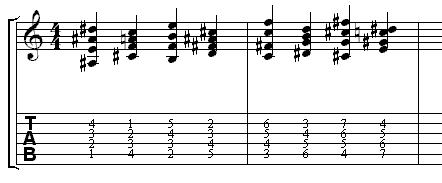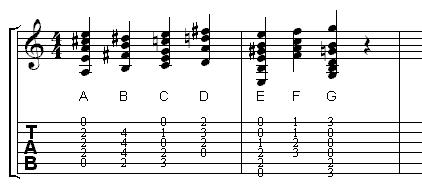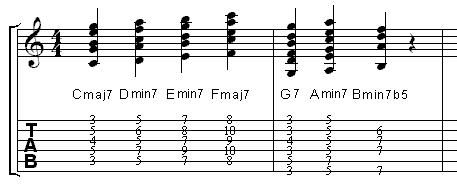Chord Changes
In all of these exercises you should concentrate on smooth chord changes not fast chord changes. As you make smoother and smoother chord changes the extra speed will come naturally.
Figure 1.
This exercise is designed to get you moving all our fingers at the same time. Move from chord to chord in a slow, relaxed manner. Make faster chord changes by being more precise in your movements.

Figure 2.
This is an exercise to help you learn simple major chord shapes. You can either make up a strumming pattern or just play one strum for each chord to the beat of a metronome. The latter technique is much better for showing up how smooth your chord changes are.

Figure 3.
These chords are harmonised (built) from the C major scale. Each chord takes its bass note from a note in the C major scale. It is vital to familiarise yourself with the C major scale first. On the last chord use your 2nd finger to fret the bass note and drape it over the 5th string (muting it).
